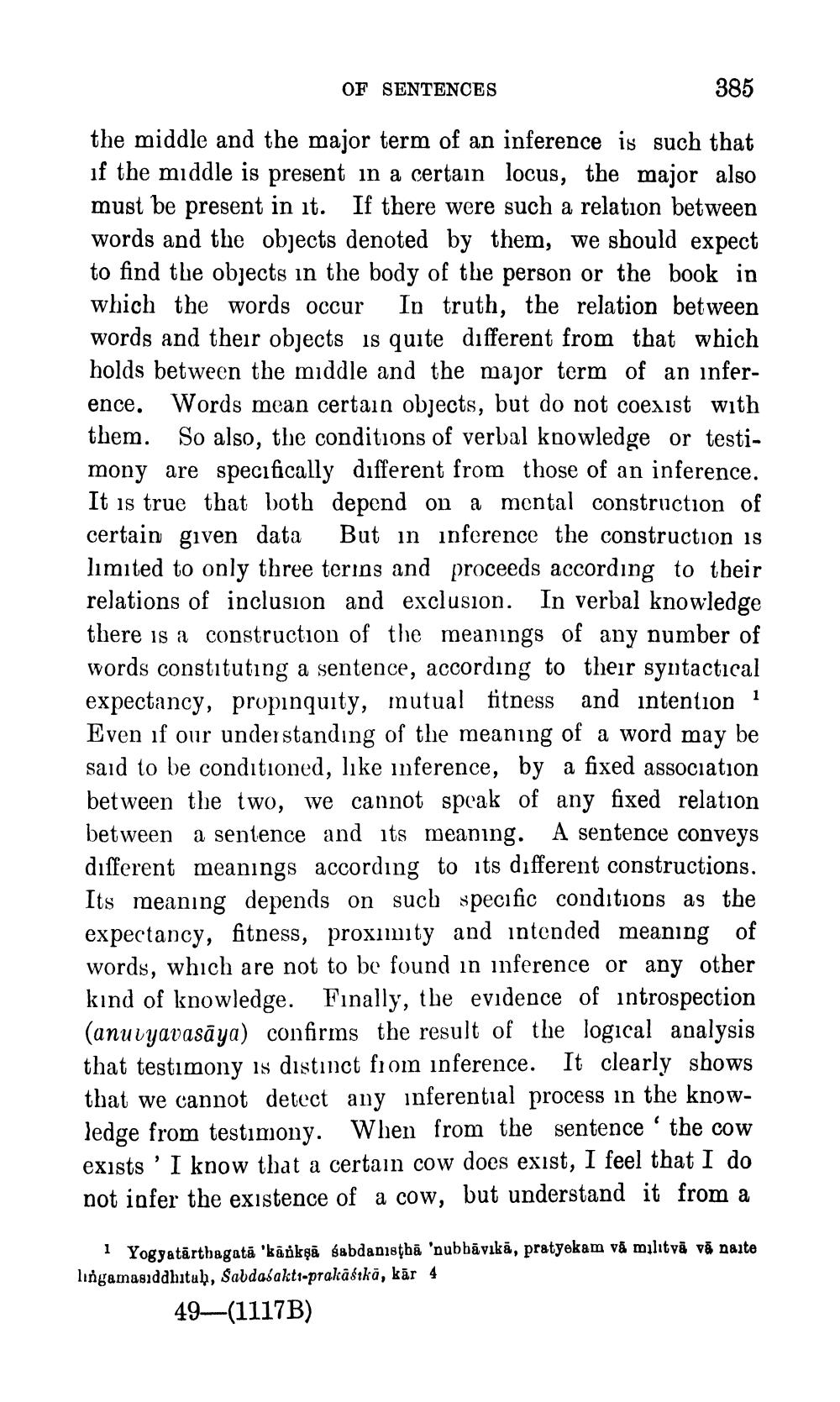________________
385
ence.
the middle and the major term of an inference is such that if the middle is present in a certain locus, the major also must be present in it. If there were such a relation between words and the objects denoted by them, we should expect to find the objects in the body of the person or the book in which the words occur In truth, the relation between words and their objects is quite different from that which holds between the middle and the major term of an inferWords mean certain objects, but do not coexist with them. So also, the conditions of verbal knowledge or testimony are specifically different from those of an inference. It is true that both depend on a mental construction of certain given data But in inference the construction is limited to only three terins and proceeds according to their relations of inclusion and exclusion. In verbal knowledge there is a construction of the meanings of any number of words constituting a sentence, according to their syntactical expectancy, propinquity, mutual fitness and intention 1 Even if our understanding of the meaning of a word may be said to be conditioned, like inference, by a fixed association between the two, we cannot speak of any fixed relation between a sentence and its meaning. A sentence conveys different meanings according to its different constructions. Its meaning depends on such specific conditions as the expectancy, fitness, proximity and intended meaning of words, which are not to be found in inference or any other kind of knowledge. Finally, the evidence of introspection (anuvyavasaya) confirms the result of the logical analysis that testimony is distinct from inference. It clearly shows that we cannot detect any inferential process in the knowledge from testimony. When from the sentence' the cow exists' I know that a certain cow does exist, I feel that I do not infer the existence of a cow, but understand it from a
OF SENTENCES
1 Yogyatarthagata 'kanksā sabdanisṭhā 'nubbāvikā, pratyekam vā militvā vā naite lingamasiddhitaḥ, Sabdaśakti-prakāśikā, kār 4
49-(1117B)




